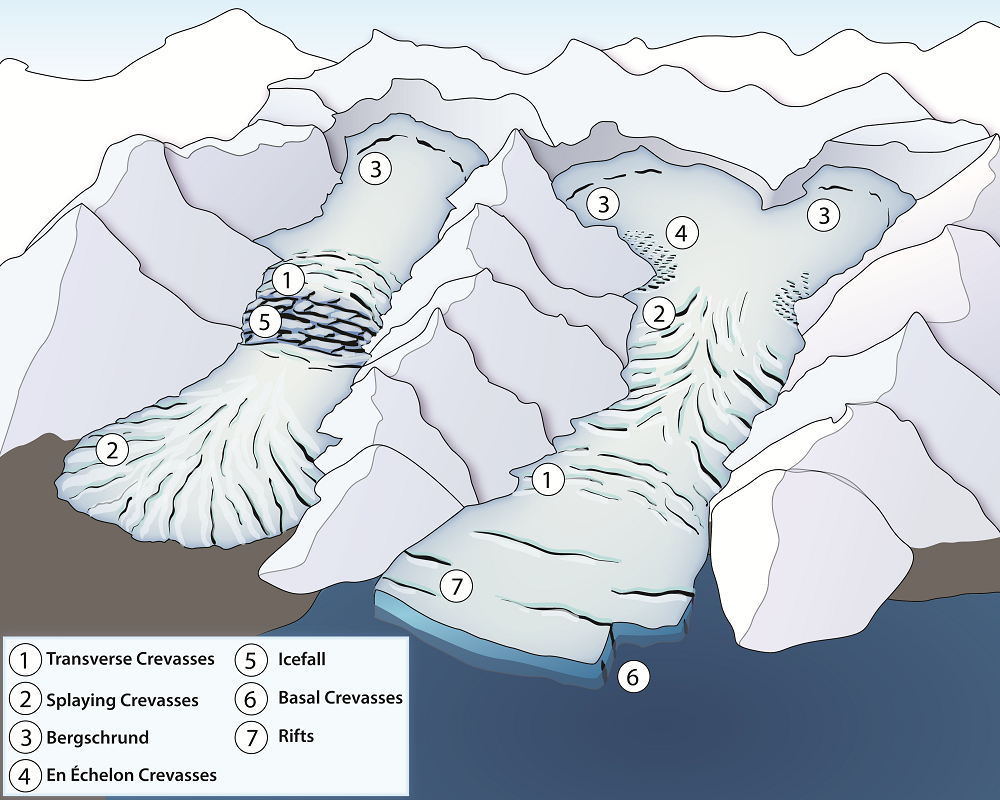ABOUT

I’m a scientist studying ice sheets and sea-level rise in our changing climate. I use a variety of methods to assess the health — and sea-level contribution — of Earth’s land ice in recent decades. My research focuses mainly on Greenland, but I do work with Antarctica and other glacier regions.
I work with ice-flow simulations of how the Greenland and Antarctic ice sheets may evolve under future climate. I use satellite observations to assess when and where we are losing ice today. I also maintain instruments on the Greenland ice sheet that collect local small data against which the big data of satellite observations and/or climate simulations can be evaluated.
I like to study ice-sheet processes that are ‘new to science’, especially those related to the ice-bed interface and crevasse formation. For example, in addition to assessing ice-sheet health, my current science projects involve looking for under-ice geothermal hot springs in Northeast Greenland and understanding why a mega-crevasse field has appeared in West Greenland in recent decades.
TOP THREE
If you want a more detailed sense of my research, I briefly introduce my top three favorite research articles from my CV. My GoogleScholar profile provides a complete list.
1. THE PAINSTAKING
W. Colgan, H. Rajaram, W. Abdalati, C. McCutchan, R. Mottram, M. Moussavi and S. Grigsby. 2016. Glacier Crevasses: Observations, Models and Mass Balance Implications. Reviews of Geophysics. 53: 119-161. https://doi.org/10.1002/2015RG000504
I'm pretty meticulous in general, but an invitation to contribute to Reviews of Geophysics forces thoroughness to the next level. Review articles are beasts by nature. In this case, our goal was to summarize everything ever written about crevasses for a dual science and safety motivation. We ended up surveying sixty years of crevasse research, from field observations to numerical modeling to remote sensing, in an epic tome that weighs in at 43 typeset pages with 238 citations. That's about four times longer than a typical article for me. Did you know, that, while crevasses are often conceptualized to initiate at the ice surface and propagate downwards, there is compelling evidence that they can initiate at several meters depth and then propagate upwards?

2. THE COMMUNITY EFFORT
The IMBIE Team. 2020. Mass balance of the Greenland Ice Sheet from 1992 to 2018. Nature. 579: 233–239. https://doi.org/10.1038/s41586-019-1855-2
It is really neat to be part of a community effort to produce a big deliverable. The Ice sheet Mass Balance Inter-comparison Exercise (IMBIE) brought together 26 different assessments of Greenland ice loss to develop a consensus record for the IPCC Sixth Assessment Report. There were a whooping 96 co-authors in the IMBIE Team. It can definitely feel like you are a small cog on a large gear, but it was pretty thrilling to see my name anchoring one of only two input-output mass budget assessments that extend our consensus record prior to the 2003 onset of satellite altimetry and gravimetry assessments. There is a whole lot of work — and people — behind each of those wiggly lines!

3. THE BIG PICTURE
J. MacGregor, W. Colgan, M. Fahnestock, M. Morlighem, G. Catania, J. Paden and S. Gogineni. 2016. Holocene deceleration of the Greenland Ice Sheet. Science. 351: 590-593. https://doi.org/10.1126/science.aab1702
Showing that ice flow in the Greenland Ice Sheet interior has been slowing down over the last 9000 years is about as big picture as it gets for me. This article is a personal touchstone for unexpected collaborative jewels that can happen at small workshops. Joe was presenting ice-sheet radar stratigraphy suggesting interior ice flow had slowed, and I was presenting an ice-flow model suggesting the gradual replacement of softer Last Glacial Period ice with harder Holocene might result in an ongoing slowdown of ice flow. This ice-sheet slowdown is accompanied by ice-sheet thickening, which might prompt the question: how much of the satellite-observed interior thickening is due to the ice sheets ongoing response to the last deglaciation?

FUNDING
My public scientific work is currently supported by a variety of funding sources. I receive internal public funding within the Danish Ministry of Climate, Energy and Utilities, and external public funding from the Independent Research Fund of Denmark. I receive external private funding from the Novo Nordisk Foundation and the Carlsberg Foundation. Some of my scientific activities, such as scientific editorships, are done on an uncompensated or volunteer basis. Finally, I very occasionally provide expert private consultation to relevant third-party projects for which I receive compensation.





